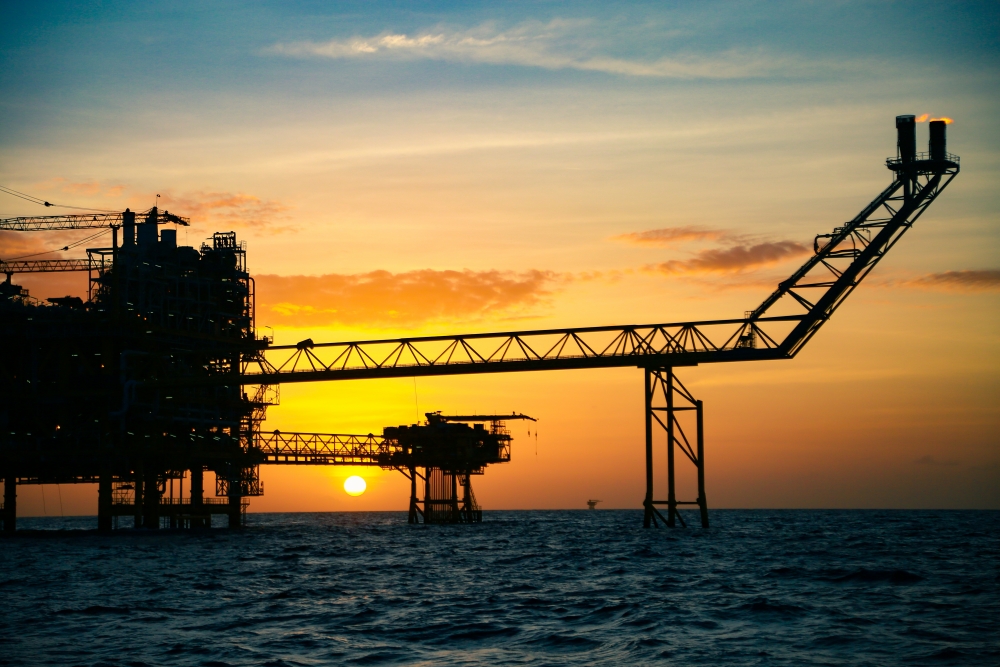
Sneaky Leaks

For decades, policymakers and oil companies have debated how to handle large quantities of methane gas that leak out as a natural byproduct of oil production. New research by UC Santa Barbara professor of political science Paasha Mahdavi shows that current practical and policy-driven solutions to the problem aren’t working, and that they may in fact be doing harm on both local and global levels.
In an article published in The Proceedings of the National Academy of Sciences (PNAS), Mahdavi and co-author Raphael Calel, an assistant professor at the McCourt School of Public Policy at Georgetown University, argue that more effective policies and incentives are needed to drive oil companies to end potentially damaging practices of either burning off unwanted gas (“flaring”) or releasing it directly into the atmosphere (“venting”).
To get rid of it, many companies would burn off — or flare — that gas in a controlled manner on site, Mahdavi explained. Policies were limited in scope until a 2015 global initiative led by the World Bank aimed at reducing air pollution directed countries to curb the practice by 2030.
“We are effectively studying government policies that are trying to reduce flaring,” Mahdavi explained. “What we’ve found is that these policies have some pretty terrible unintended consequences. In particular, the policies might appear to be successful because they are reducing the burning of gas, but that success is masking the failure of what producers might be doing, which is venting the gas instead.”
It’s also a problem because venting is much harder to track — it can’t be seen by the naked eye and requires sophisticated satellites to detect. “The unintended consequences of policies that have been designed to stop flaring appear to be incentivizing something much worse — venting methane,” Mahdavi said. “Accounting for displaced consumption, venting is 16 times worse than flaring in terms of global warming potential, and it has a range of pollutants that are really bad for anyone around — much worse than carbon dioxide.”
Mahdavi and his co-author point out that flaring and venting are responsible for 6% of total greenhouse gas emissions — a number that is especially troubling considering that the gas isn’t used for anything. “We’re saying that 6% is so high for something that is such a waste,” Mahdavi said. “No one is using this gas and there is no reason to do this other than companies don’t want to spend the money to maintain cleaner operations.” The researchers also cite estimates that these practices account for eight percent of gas production wasted, which seems especially inefficient when companies are spending nearly half a trillion dollars to drill for gas around the world.
Even though the issue of how to capture natural gas and resell it has been solved from a technological standpoint, Mahdavi noted that many of the incentives intended to promote the building of new gas pipelines are ultimately unsuccessful. “It’s often touted as an easy aspect of climate policy to fix, because this is wasted gas,” he said. “You’d think that this is a quick 6% of greenhouse gas emissions we can cut. We’re saying it’s not that easy, and if it was easy it would have been solved already. But the incentives aren’t working as they should.”
In the article, Mahdavi and Calel propose two solutions that would help correct the issues they see. First, the development of (and investment in) remote sensing techniques for detecting methane emissions, which would give regulators the technological tools they need to effectively curb venting and flaring. And second, new production taxes that, if adopted as the primary means of financing gas infrastructure, would counteract many of the effects on downstream emissions.
“The solutions in place now aren’t going to work without better monitoring,” Mahdavi said. “And even if you are trying to incentivize oil producers to build infrastructure, that doesn’t actually stop flaring. In some cases, it just increases production, which can lead to greater greenhouse gases. It’s a one-two punch — you need better monitoring and you have to make sure to pair that with taxes so that you’re not increasing production but rather providing an outlet for gas that would have been flared.”
While Mahdavi and his co-author hope that their message reaches policymakers and environmental advocates, they also see it as relevant to anyone living near oil production facilities — including Santa Barbara residents. “This is a problem that we hope to put in people’s minds whenever they see a flare or are around oil and gas infrastructure,” Mahdavi said. “It’s one I hope it resonates with folks here because we are tied to the oil industry. You can see the oil platforms from the beaches of Santa Barbara, and they do occasionally flare. It’s a local problem as much as it a global problem.”
While Mahdavi and his co-author hope that their message reaches policymakers and environmental advocates, they also see it as relevant to anyone living near oil production facilities — including Santa Barbara residents. “This is a problem that we hope to put in people’s minds whenever they see a flare or are around oil and gas infrastructure,” Mahdavi said. “It’s one I hope it resonates with folks here because we are tied to the oil industry. You can see the oil platforms from the beaches of Santa Barbara, and they do occasionally flare. It’s a local problem as much as it a global problem.”



